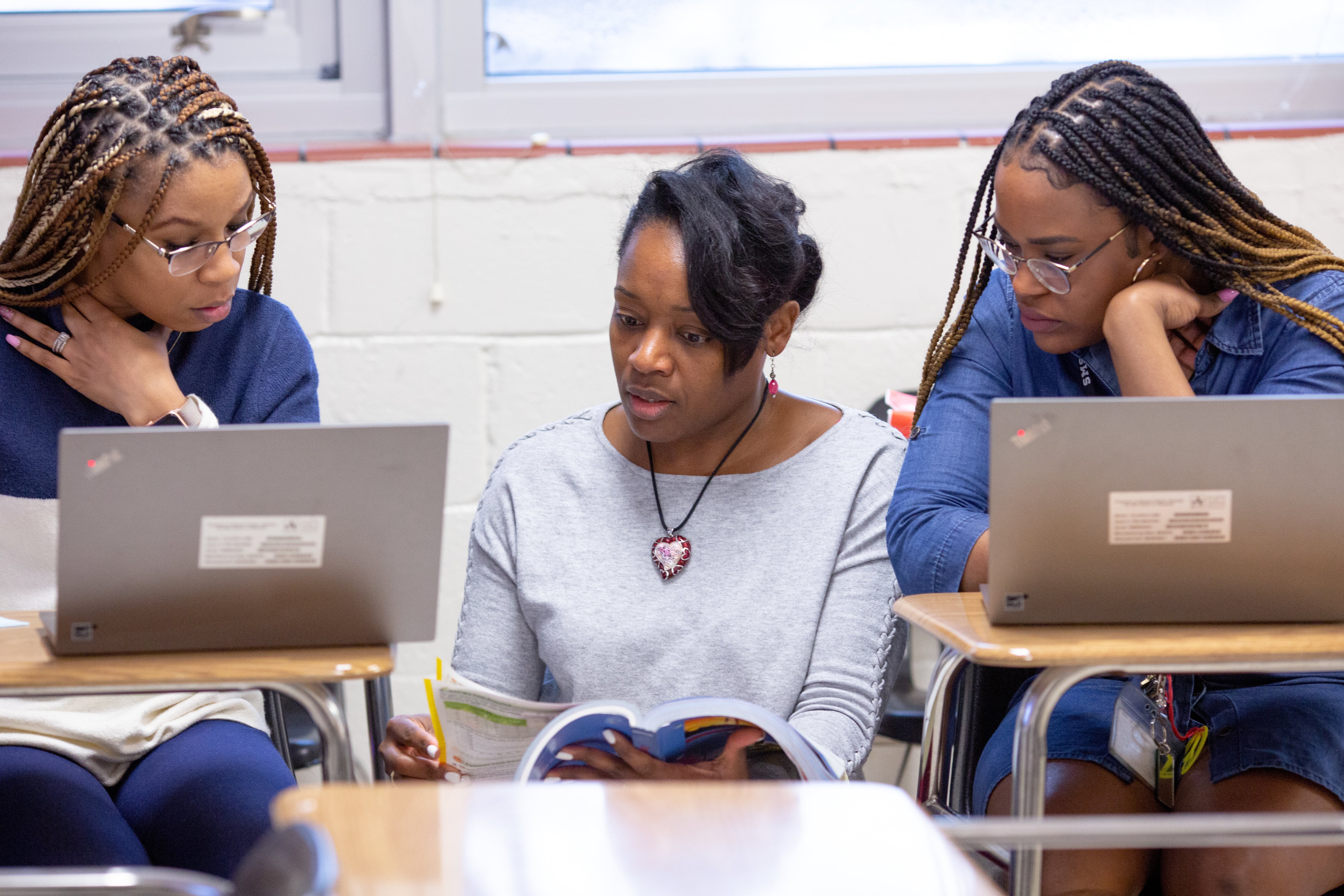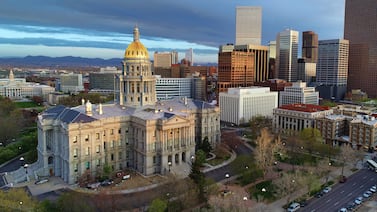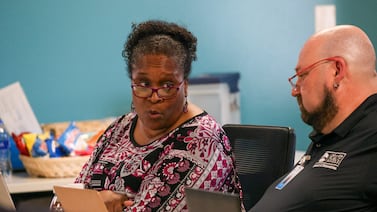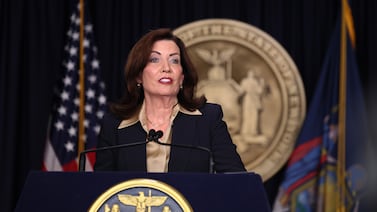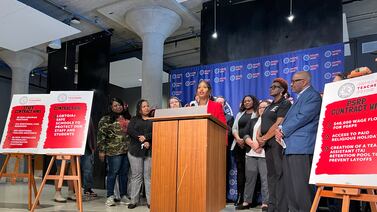Students across the country are heading back to school. Will there be enough teachers waiting for them?
ABC’s World News Tonight claimed that there was a “teacher shortage crisis.” The Washington Post described a “catastrophic teacher shortage.” Some local school officials say hiring this summer has been particularly difficult.
But some researchers have been skeptical, saying that the data does not support these claims and that shortages are limited to certain schools and subjects.
So what do we know? Are teachers really leaving in droves? Will more classes begin the year led by substitutes? Did the pandemic exacerbate these issues?
Definitive data is limited, and school hasn’t started yet in much of the country. To date, there is little firm evidence to support claims of an unprecedented crisis. When American students return to school, the vast majority will be greeted by a classroom teacher.
But the ingredients — high levels of teacher stress, more teaching positions to fill, a long-term decline in people training to become teachers, and competition from jobs outside schools — are there for it to be a harder than normal year for recruiting teachers. High-poverty schools in particular will face familiar challenges staffing their classrooms with skilled teachers.
“Is there a national teacher shortage? I think the reality is more nuanced,” said David Rosenberg, who works with district officials across the country through the nonprofit Education Resource Strategies. “And in some places, heck yeah.”
Here’s what we know — and don’t know — about claims of a national teacher shortage.
Some school officials are raising red flags
As of June 2022, the average American public school reported having 3.4 open teaching positions, according to a recent survey released by the U.S. Department of Education. (The study did not break down how many teachers the average school employs, though a rough estimate, based on pre-pandemic data, is 35.)
There is no exact comparable figure from before the pandemic. In fall 2017, Chalkbeat found that vacancy rates among large districts on the first day of school ranged from 0 to 6%.
Districts typically spend the end of the prior school year and summer working to fill their vacancies. School has not yet started in much of the country, so officials still have some time to fill the last openings.
Still, the same survey found that 62% of school leaders said that the pandemic had made it more difficult to fill those open positions.
“We are now at the crisis point,” said Aimee Green-Webb, the chief of human resources for Jefferson County, Kentucky schools, according to the Louisville Courier-Journal.
Rosenberg has heard similar sentiments. “The lived experience in many, many places is that there are fewer adults that are qualified to lead classroom instruction,” he said. School leaders have also reported a shortage of bus drivers, substitutes, and other support staff.
Granular data on teacher hiring from individual school districts is just starting to trickle in. For instance, Clark County, Nevada — the country’s fifth largest district — began school this week with 8% of teaching positions unfilled. That’s a strikingly high figure and far more vacancies than usual for the district.
The situation is different in Montgomery County schools, a large Maryland district. The system has filled 98% of teaching positions three weeks before school begins.
Officials there are concerned about the 157 still-empty teaching spots. But the numbers are already an improvement from last year, when school began with 283 openings, according to data previously obtained by Chalkbeat.
Schools in Memphis also saw a decline in open positions compared to the same time last year.
But just because a job gets filled doesn’t mean that schools found a good fit. Leaders may end up hiring a less qualified or less skilled teacher if pickings are slim.
Lisa Stanley, superintendent of the North Texas Collegiate Academy, a group of three charter schools north of Dallas, says she hasn’t seen any uptick in teacher turnover. And even as the schools have hired more teachers to accommodate expansion, they are fully staffed for the first day of class on Thursday.
But the schools have seen fewer experienced applicants than usual, and so have hired more novice teachers. “We know that they’re going to need mentoring and coaching,” said Stanley. “We strongly believe you can hire for heart and train for skill.”
Some districts are adding teachers with new money, which might increase vacancy numbers
Schools are still working to spend down unprecedented sums of COVID relief, and many are hiring additional staff to help students catch up. A RAND survey found that about three quarters of districts had increased teacher hiring above pre-pandemic levels. Another U.S. Department of Education survey found that 30% of vacant positions last school year were because of newly created roles.
“Our ambitions are higher,” said Rosenberg. “With federal funding, district teams are trying to fill more positions.”
That suggests that some vacancies are due to heightened demand (districts want to hire more) rather than dwindling supply (teachers leaving or not applying).
That’s still a problem. Districts are hiring more teachers for a reason — often because students are still behind academically — and if they can’t do so, that might derail recovery plans. In one survey, a majority of district leaders said staffing shortages have limited their ability to spend COVID relief.
Some of the biggest challenges aren’t new at all — especially staffing high-poverty schools
The difficulty of finding a teacher often depends on the school and subject.
For instance, vacancy figures were notably higher in schools with more children from low-income families and more students of color, according to the federal survey. Schools serving mostly students of color reported 4.4 vacancies in June, compared to 2.6 in predominantly white schools.
In a separate survey, districts with more low-income students and students of color were more likely to say shortages had derailed COVID relief spending.
Similarly, the federal data shows about half of school leaders said it was very difficult to fill open teaching positions in math, science, foreign language, as well as special education roles. But it was easier to fill general elementary, social studies, and English positions.
These are perennial challenges. Even before the pandemic, rates of teacher turnover in high-poverty schools were nearly twice as high as in affluent schools.
There still is no evidence of a teacher exodus during the pandemic, though that could change
In the summer of 2020 after the pandemic first hit, teacher turnover actually dipped, probably because the weak economy had workers sticking with a stable job. The next year, there was a small but meaningful uptick in turnover.
Combined, turnover in those two years looks similar to pre-pandemic levels. Take Texas: 9.3% of teachers in the state left 2020 and 11.6% did in 2021. In the two years before the pandemic, attrition was 10.2% and 10.4%, respectively.
We don’t have much data on turnover going into this school year yet. But some districts — including Fort Worth, Texas, Omaha, Nebraska, Washington, D.C., and Jefferson County, Kentucky — have reported more teachers leaving than usual. Some other districts, though, have seen lower or comparable turnover rates.
That could still change, especially since teacher stress has been high throughout the pandemic.
In one survey in winter 2021, three quarters of teachers reported frequent stress on the job — significantly higher than other workers. That year a key source of stress was toggling between remote, in-person and hybrid instruction. Last school year, teachers continued to report high levels of stress driven by student behavior issues and a desire to help students catch up academically, among other things.
In the recent federal survey, nearly 90% of school leaders said that the pandemic had led to more teacher and staff burnout.
“We know the job got harder during the pandemic,” said Rosenberg.
Stanley said teachers in her schools have also been frustrated by the perception that classroom instruction is being micromanaged by state politicians.
“What we’re hearing is this noise surrounding the class — over what is the content and how they’re delivering it and constant legislative changes and extra demands — are just adding to the stress,” she said.
Many teachers who ponder leaving the classroom end up staying put. But it’s still concerning that so many teachers feel stressed and burned out. That is bad for teachers themselves and could affect their performance in the classroom.
Adding to the challenge: a decline in interest in teaching pre-dating the pandemic
Before the pandemic, the number of college students training to become teachers was steadily declining. One Texas study found that in 2010, 13% of college applicants expressed interest in teaching; by 2020, that number had dropped to 7%.
If that decline continues, that could create a bigger and longer-term challenge for schools with open roles to fill.
That’s another reason that stress among existing teachers could be a problem: that might dissuade others from becoming teachers.
“Our best marketing strategy is a happy teacher,” said Stanley.
Matt Barnum is a national reporter covering education policy, politics, and research. Contact him at mbarnum@chalkbeat.org.

